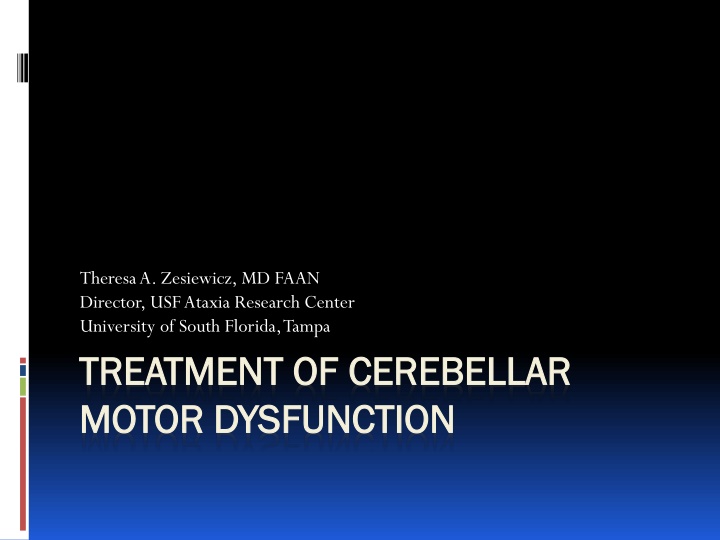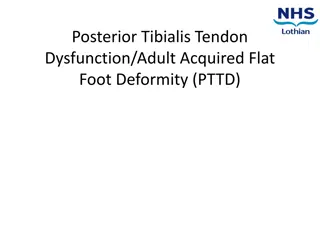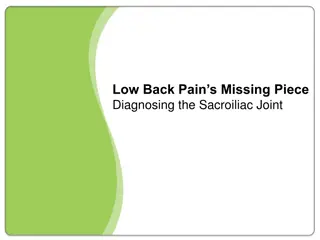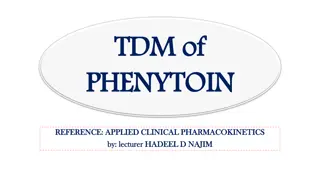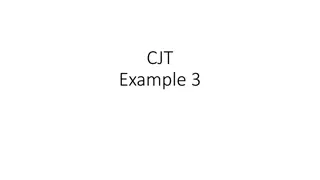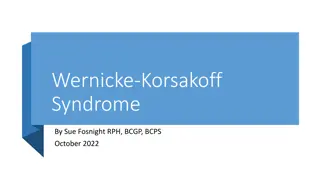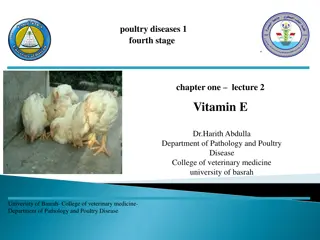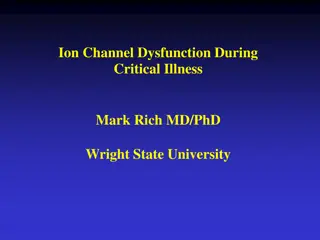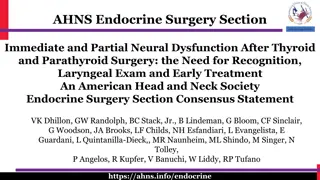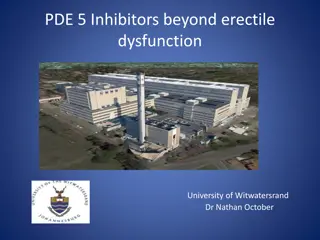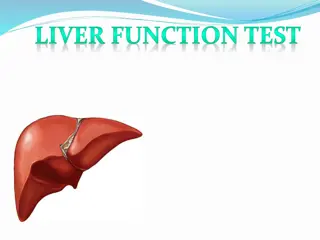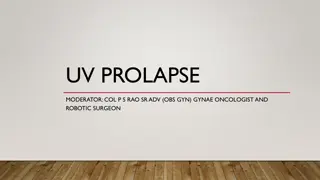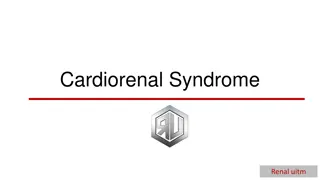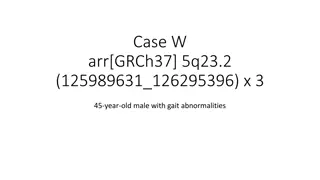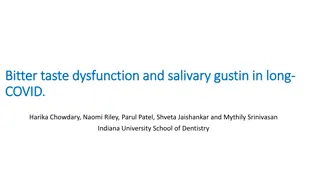Cerebellar Dysfunction and Ataxia
Cerebellar dysfunction and ataxia are characterized by symptoms such as visual problems, nystagmus, staggering gait, and difficulty in movements. Learn about the prevalence, diagnosis, and forms of degeneration and acquired ataxias in this informative content.
Download Presentation

Please find below an Image/Link to download the presentation.
The content on the website is provided AS IS for your information and personal use only. It may not be sold, licensed, or shared on other websites without obtaining consent from the author.If you encounter any issues during the download, it is possible that the publisher has removed the file from their server.
You are allowed to download the files provided on this website for personal or commercial use, subject to the condition that they are used lawfully. All files are the property of their respective owners.
The content on the website is provided AS IS for your information and personal use only. It may not be sold, licensed, or shared on other websites without obtaining consent from the author.
E N D
Presentation Transcript
Theresa A. Zesiewicz, MD FAAN Director, USF Ataxia Research Center University of South Florida, Tampa TREATMENT OF CEREBELLAR TREATMENT OF CEREBELLAR MOTOR DYSFUNCTION MOTOR DYSFUNCTION
CerebellarAtaxia The cerebellum: structure in the brain that is paramount in maintaining balance. Connections to other areas of the brain, including the thalamus and the cerebral cortex Connections to spinal cord
CerebellarDysfunction Visual problems, nystagmus Dysmetria or past pointing Difficulty with heel to shin tests Dysdiadochokinesia: rapid alternating movements Ataxia: staggering gait, in which the patient is unable to perform a tandem or heel to toe, walk Abnormal stance and wide-based gait
Ataxia prevalence One Japanese study found ataxia prevalence to be 18.5 per 100,000 In Norway, 6.5 per 100,000 Other studies: 5 per 100,000 All ataxias taken together, highest range may be 15 to 20 per 100,000 Klockgether et al
Diagnosis Neurologic exam to differentiate between cerebellar and sensory ataxia Document findings May perform scales to rate cerebellar dysfunction Ask about family history
Cerebellar Degeneration Most common form of acquired cerebellar degeneration is alcohol Affects lower limbs, with gait disorder *Manto and Marmolino
Degenerative Ataxias Autosomonal dominant ataxia Parkinsonism (Multiple System Atrophy-C, or cerebellar) Autosomal Recessive ataxia X-Linked Sporadic, idiopathic ataxia
Acquired Ataxias* Stroke Toxic (ethanol) Drugs (antiepileptics, lithium, some chemotherapeutic agents) Heavy metals Solvents Immune related Infectious *Manto and Marmolino
Acquired Ataxias Traumatic Neoplastic Endocrine Structural disease (dysplasias)
Multiple System Atrophy (Atypical Parkinsonism) Most common nonhereditary ataxia Parkinsonism with other features, including orthostatic hypotension (drop in blood pressure upon standing), imbalance No treatment for underlying cause MSA-P and MSA-C
Immune-mediated Cerebellar* Ataxia Multiple sclerosis Stiff person syndrome Gluten Miller-Fisher Lupus Thyroiditis Paraneoplastic cerebellar syndrome * Mano et al
Episodic Ataxia Episodic ataxia (EA) is an autosomal dominant disorder characterized by sporadic bouts of ataxia (severe discoordination) Myokymia may be present Ataxia can be provoked by stress or startle Can occur in infancy Mutations of the gene KCNA1, which encodes the voltage-gated potassium channel KV1.1, are responsible for this subtype of episodic ataxia.
Autosomal dominant ataxias: SPINOCEREBELLAR ATAXIA 30 + SCA types are known SCA1,SCA2, SCA3 and SCA6 represent the most frequent SCAs worldwide The prominent disease symptoms of the currently known and genetically defined 30+ SCA types result from damage to the cerebellum and interconnected brain grays and are often accompanied by more specific extra-cerebellar symptoms.
Positive Family History Dominant: Spinocerebellar ataxia, episodic ataxia Different SCA s have different phenotypes For example, SCA 5 and 6 are purely cerebellar SCA 1,2,3, 12, 17, 21 have associated parkinsonism
Pathophysiology of SCAs The most frequent sites of neurodegeneration Cerebellum Thalamus Pons Midbrain Different SCAs usually overlap considerably in advanced stages
Spinocerebellar Ataxias * Autosomal dominant ataxias, numbered in the order in which they were discovered Seizures occur in SCA types 10, 17 Down-beat nystagnus (SCA 6) Pigmentary retinopathy (SCA 7) Ocular Dyskinesia (SCA 10) Dystonia (SCA 3,14, 17) Myokymia (SCA 5) Many SCA s are marked by pyramidal signs and peripheral neuropathy *Mano and Marmolino
Spinocerebellarataxias SCA 1,2,3: ataxin (gene product) SCA 6: Calcium channel subunit SCA 14: potassium channel subunit SCA 5 and 6: almost pure cerebellar ataxia SCA 4: ataxia, sensory neuropathy SCA 1,2,3: Ataxia, pyramidal signs, neuropathy, RLS, parkinsonism
Azores .
Autosomanl Dominant Ataxia Athena diagnostics now offers tests to diagnose many of these diseases (blood tests) SCA s generally begin later on in a patient s life, 40 s or 50s Alternatively, autosomal recessive ataxias usually occur in early life Both are progressive Falls and swallowing problems, urinary issues
Controversial issue regarding Lincolns ancestors and SCA 5 . JPG
SCA 5 SCA5 is sometimes called Lincoln s ataxia because a 10-generation family with the condition has ancestries that trace to the paternal grandparents of President Abraham Lincoln. SCA5 also is sometimes called Holmes ataxia after Dr. Gordon Holmes,
Autosomal Recessive Ataxia Friedreich s Ataxia Abnormality of protein Frataxin Gene locus 9q13 Others include Abetalipoproteinemia, Metochromatic leukodystrophy, Nieman-Pick, Wilson s disease, Refsum s disease
Autosomal Recessive Ataxia FRDA AOA2 Ataxia telangiectasia Marinesco-Sjorgren Charlevoix-Saguenay Vitamin E deficiency
Friedreichs Ataxia Mutation in gene that codes for frataxin, located on chromosome 9. This protein is essential for mitochondrial functioning Frataxin absence leads to iron buildup Free radical damage Antioxidants and ways of increasing frataxin are being researched
Friedreichs ataxia An expanded guanosine, adenine, adenine (GAA) triplet repeat (first intron) in both alleles of the frataxin gene occurs in 98% of people with FA (Pandolfo, 2012). The length of the GAA repeats correlates with the age of onset, progression, and severity of the disease.
Friedreichs Ataxia Symptoms typically begin sometime between the ages of 5 to 15 years Muscle weakness in the arms and legs Loss of coordination Vision impairment Hearing impairment Slurred speech Scoliosis Diabetes Cardiomyopathy
Friedreichs Ataxia Pathophysiology The posterior columns and corticospinal, ventral, and lateral spinocerebellar tracts all show demyelination The dorsal spinal ganglia show shrinkage and eventual disappearance of neurons associated with proliferation of capsular cells. The loss of large neurons in the sensory ganglia causes extinction of tendon reflexes.
Friedriechs Ataxia Cardiomyopathy Arrhythmias Even if Ejection Fraction is within normal limits, there are cardiac abnormalities Diabetes and issues with carbohydrate metabolism Follow HgbA1C every year Echocardiogram every year, as well as EKG
Immune-mediated Cerebellar* Ataxia Multiple sclerosis Stiff person syndrome Gluten Miller-Fisher Lupus Thyroiditis Paraneoplastic cerebellar syndrome * Mano et al
FXTAS (X-linked) Fragile-X tremor-ataxia syndrome (FXTAS) Older males, often family history of fragile-X mental retardation in a grandson Parkinsonism Postural tremor Imbalance Can be confusing if you see patients who have parkinsonism , what appears to be ET and ataxia
ACETYLCHOLINE, NICOTINIC ACETYLCHOLINE, NICOTINIC RECEPTORS RECEPTORS
Physostigmine (Early work in ataxia) Physostigmine acts by interfering with the metabolism of acetylcholine It is a reversible inhibitor of acetylcholinesterase, the enzyme responsible for the breakdown of acetylcholine in the synaptic cleft of the neuromuscular junction It indirectly stimulates both nicotinic and muscarinic receptors.
Physostigmine Kark et al, 1981; 28 patients various inherited ataxias No validated tool, no baseline characteristics besides ataxia, no allocation concealment Videotape assessments Responders and non-responders Very low dose of physostigmine Drug was more effective than placebo (p < 0.05)
Physostigmine Wessel et al Physostigmine patch did not have any benefit Manyam had a DB, crossover trial, also found negative All studies suffered from poor inclusion criteria, lack of validated tool
Varenicline 2012 A Randomized Trial of Varenicline (Chantix) for the treatment of Spinocerebellar Ataxia type 3 Varenicline is a partial agonist at alpha4beta2 nicotinic acetylcholine receptors 20 patients with genetically confirmed SCA 3 were randomized to receive varenicline 1 mg BID or placebo DB, randomized, placebo-controlled trial USF, BI and UCLA
Varenicline Outcome measure was the SARA, timed 25 foot walk The most common side effect encountered was nausea, vivid dreams There were significant improvements in gait, stance, rapid alternating movements (SARA) and timed 25 foot walk Beck s Depression Scale improved in these patients significantly FDA Orphan Drug Program
Varenicline Improvements were significant for axial function Only rapid alternating movements improved for appendicular function Idea is to find a drug that works on the nicotinic acetylcholine system with fewer side effects than varenicline .
Study Results Intended as a cross-over study However, very high placebo drop-out rate (urosepsis and muscle pain, non-compliance) Average dose: 1.67 0.50 mg/day Significant improvements in gait (p = 0.04), stance (p = 0.03), RAM (p = 0.003), and timed 25 foot walk (p = 0.05). AE s: nausea, vivid dreaming, leg tingling
Nicotinic agonists May confer improvement by a combination of actions initiated at different subtypes of neuronal receptors Varenicline: Alpha4, beta 2, but full agonist activity at alpha 7 receptors and weak partial activity at alpha3beta 2 and alpha 6 Activity at alpha 7 and alpha4beta2 receptors (stimulation) protects glutamate-induced motor neuron death in rat spinal cord cultures
GLUTAMATE GLUTAMATE
Riluzole Ristori et al 2011 DB, randomized, placebo-controlled trial Riluzole 100 mg/day for 8 weeks Chronic cerebellar ataxia (FA, SCA 1,2 28), MSA- C) ICARS Positive effect was predetermined to be an improvement in the ICARS of 5 points (100 point scale)
Riluzole 40 patients with cerebellar ataxia SCA, FA, FXTAS, sporadic ataxia, MSA-C, anti- GAD antibodies. Significant improvements in total ICARS, subscores for static function and kinetic function and dysarthria 4 mild adverse events.
SEROTONERGIC SEROTONERGIC DRUGS DRUGS
Trouillas et al, 1988; Double-blind, controlled trial to evaluate the safety and efficacy of L-5-HTP in ataxic patients Inclusion criteria: Inherited and acquired ataxia, LOCA, cerebellar atrophy, FA, infarction, MS Dose: 10 mg/kg/day of L-5-hydroxytryptophan Resulted in significant improved scores in upright standing, speed of walking ,and speaking
Buspirone Lou et al, Open label study of buspirone showed benefit in treating ataxia Trouillas et al, 1997: DB, placebo-controlled trial, patients with pure cerebellar cortical atrophy (1mg/kg) Excluded pontine involvement Significant improvements in standing with feet together in one place No other improvements, deemed clinically minor MJD not responsive to treatment
Buspirone Assadi et al Double-blind, placebo-controlled randomized trial in SCA 1,2, 3, 6, FA,DRPLA Buspirone 30mg/day or placebo for 12 weeks ICAARS, one drop-out No difference in total ICAARS scores between groups No comment on subscores in the ICAARS
Tandospirone Tandospirone (Sediel) is an anxiolytic and antidepressant used in China and Japan, Tandospirone acts as a potent and selective 5-HT1A receptor partial agonist It is closely related to other agents like buspirone
THYROTROPIN THYROTROPIN RELEASING HORMONE HORMONE RELEASING
